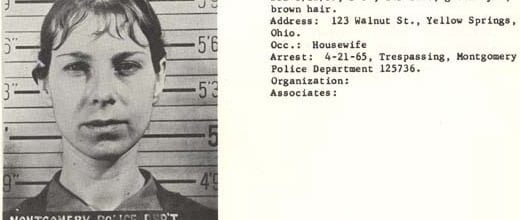
The Rebel Coder
Another awesome story of a Female hacker
Shane Brown
6/16/20255 min read


The Rebel Coder: Jude Milhon (St. Jude) - The Patron Saint of Hackers
In 1973, an unusual sight appeared in a Berkeley record store: a mysterious cardboard box containing a typewriter connected to a computer terminal. This seemingly simple contraption, which allowed people to type messages into a computer for the first time in their lives, represented the visionary work of Jude Milhon—a remarkable woman who would later earn the title "patron saint of hackers." Her journey from civil rights activist to programming pioneer helped establish the foundation of the digital age we inhabit today.
From Civil Rights to Digital Rights
Born Judith Milhon on March 12, 1939, in Washington D.C., the future St. Jude began her activism in the civil rights movement of the 1960s. Raised in Indiana by a military Marine Corps family, Milhon demonstrated her commitment to social justice early on. In 1965, she participated in the historic Selma to Montgomery voting rights march in Alabama, one of the most significant moments of the civil rights movement. Her dedication to the cause led to multiple arrests for civil disobedience, including in Jackson, Mississippi.
Rather than abandoning activism, Milhon redirected her revolutionary spirit from the streets to cyberspace. In 1967, at age 28, she taught herself programming by studying "Teach Yourself Fortran" and quickly mastered assembly code for the 1440 computer. Her first professional programming position involved writing software for vending machines at Horn & Hardart in New York—modest beginnings for someone who would become a digital revolutionary.
Creating the Internet Before the Internet
After relocating to Berkeley, California, in 1968 during the height of the counterculture movement, Milhon connected with fellow techno-activists including Lee Felsenstein and her long-term partner Efrem Lipkin. Together, they launched one of the most prescient experiments in digital history: Community Memory.
Introduced in 1973, Community Memory represented a revolutionary concept—the world's first public computerized bulletin board system. The infrastructure was elegantly simple: an SDS 940 timesharing computer in San Francisco connected via a 110-baud link to a Teletype terminal housed in the now-famous cardboard box at Leopold's Records. Users could read messages free of charge but paid 25 cents to post, essentially creating a coin-operated social network decades before the advent of modern platforms.
Community Memory's significance extended beyond its technology to encompass its underlying philosophy. The system's brochure proclaimed: "Strong, free, non-hierarchical channels of communication... are the front line of reclaiming and revitalizing our communities." The platform evolved from a simple information exchange into what they termed an "information flea market"—a digital space for art, literature, journalism, commerce, and social interaction. Musicians particularly embraced the system, generating monthly printouts connecting performers across genres. The platform even spawned the first internet personality, a user known as "Benway."
The Birth of Cypherpunk Culture
Milhon's influence on digital culture extended well beyond Community Memory. In the early 1990s, she joined an influential group of approximately 20 cryptography enthusiasts in San Francisco, including Timothy May, Eric Hughes, and John Gilmore. During one of their monthly meetings, Milhon coined the term that would define an entire movement: "cypherpunk."
The name cleverly combined "cypher" (referring to encryption) and "cyberpunk" (the science fiction genre). Milhon described cypherpunks as "rebellious people who use encryption and cryptography tools as shields and weapons"—privacy activists dedicated to digital freedom. This movement would eventually inspire technologies ranging from the Tor browser to Bitcoin, with Satoshi Nakamoto himself participating in the cypherpunk community.
"Girls Need Modems!" - Advocating for Digital Feminism
Milhon's most famous declaration came from a 1995 Wired magazine interview: "Girls need modems!" This statement represented more than a catchy slogan—it served as a revolutionary call to action during an era when the internet remained overwhelmingly male-dominated. Milhon viewed cyberspace as an equalizing force for women, asserting: "Women may not excel at physical altercations, but we certainly master rapid-fire keyboarding."
Her approach to online harassment demonstrated characteristic resilience: "Sticks and stones may break my bones, but words on a screen affect me only as much as I allow them to." She encouraged women to develop resilience in the face of digital harassment while embracing technology's liberating possibilities. Her direct communication style reflected her belief that women should assert themselves confidently in digital spaces rather than seeking protection.
The Literary Hacker
Milhon's contributions extended beyond programming to include prolific writing about hacking culture and digital philosophy. Her 1994 book "Hacking the Wetware: The NerdGirl's Pillow Book" broke new ground as a guide that "used sexual themes to engage readers while subtly preparing them to think like hackers." The book aimed to transform women into "happy hackers" by demystifying both technology and human nature.
In 1995, she co-authored "The Cyberpunk Handbook: The Real Cyberpunk Fakebook" with R.U. Sirius and Bart Nagel. This unconventional technical manual presented a humorous, irreverent guide to cyberpunk culture, covering topics from "Social Engineering for Fun and Profit" to advice on the "Mandatory Black Leather Jacket." The book perfectly captured Milhon's understanding that hacking transcended computers—it represented a fundamental approach to understanding and challenging the world.
Her philosophy of hacking found expression in one of her most quoted definitions: "Hacking is the clever circumvention of imposed limits, whether imposed by your government, your IP server, your own personality, or the laws of Physics... Every revolutionist is a hacker, hacking the social system."
The Mondo 2000 Years
As senior editor of the influential cyberculture magazine Mondo 2000, Milhon helped shape discourse around emerging digital phenomena throughout the 1990s. Mondo 2000 served as a precursor to Wired magazine, covering cyberpunk culture with the same intensity that Rolling Stone devoted to rock music. The magazine achieved cult status during the early '90s, exploring cutting-edge topics at the intersection of technology, society, and human consciousness.
Working alongside R.U. Sirius (Ken Goffman), Milhon used the platform to advocate for digital rights, gender equality in technology, and cyberspace's transformative potential. Her writings and editorials reflected the magazine's avant-garde spirit while maintaining her commitment to social activism.
The Lasting Legacy of St. Jude
Milhon's revolutionary journey concluded on July 19, 2003, when she died of cancer at age 64. She was survived by her daughter Tresca Behling, grandson Emilio Zuniga, and her partner of over 40 years, Efrem Lipkin. Her passing prompted an outpouring of grief from the global hacker community, with Wired magazine running the headline "Hackers Lose a Patron Saint."
Milhon's influence continues to resonate across multiple domains. The Community Memory project pioneered concepts that would later manifest as social media, online forums, and digital communities. Her cypherpunk movement established the foundation for modern privacy tools, cryptocurrency, and digital rights advocacy. Most significantly, her advocacy for women in technology helped create pathways for future generations of female hackers, programmers, and digital activists.
Contemporary Relevance
In our current era of digital surveillance, social media manipulation, and technology industry gender imbalances, Jude Milhon's vision appears remarkably prescient. She understood that technology was never neutral—it represented a battleground for social justice, privacy rights, and human dignity. Her conviction that "girls need modems" has evolved into contemporary movements for diversity in technology, while her cypherpunk ideals continue inspiring privacy advocates worldwide.
Most importantly, Milhon demonstrated that hacking extends beyond breaking into computer systems—it encompasses creatively circumventing all societal limitations. Whether fighting for civil rights in Alabama or creating the world's first social network in a Berkeley record store, the hacker spirit remains consistent: question authority, embrace curiosity, and persistently push boundaries.
As St. Jude herself would likely affirm: the revolution will be digitized—and it requires more women with modems to realize its potential.
To learn more about Jude Milhon and other pioneering women in technology, explore the Community Memory archives, investigate cyberpunk literature, or engage with modern cypherpunk communities working to protect digital privacy and freedom.
Innovate
Building websites and securing your digital presence.
Connect
Support
Info@sinistergatedesigns.com
© Sinister Gate Designs, LLC 2025. All rights reserved.
